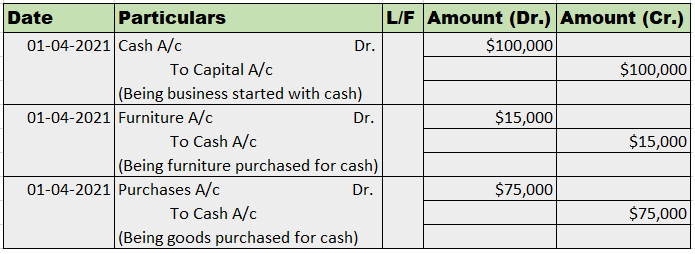The correct option is Option (b) at a particular point of time. A balance sheet discloses the financial position of an entity at a particular point of time. The particular point of time is generally the last date of an accounting year. Most of the business concerns follow an accounting year ending oRead more
The correct option is Option (b) at a particular point of time.
A balance sheet discloses the financial position of an entity at a particular point of time. The particular point of time is generally the last date of an accounting year. Most of the business concerns follow an accounting year ending on 31st March and prepare their balance sheet as at 31st March.
By financial position, it means the value of assets and liabilities of the entity. As an entity may enter into monetary transactions every day, the values of the assets and liabilities may also vary every day. Hence, to prepare the balance sheet of an entity, a particular point of time is to be chosen which is generally the last date of an accounting year
Option (a) for a given period of time is incorrect.
It is because the values of assets and liabilities of concern may differ daily, a balance sheet cannot be prepared to disclose the financial position of an entity for a given period of time.
The statement of profit or loss is prepared for a given period of time as it discloses the overall performance of an entity for a given period of time.
Option (c) after a fixed date is also incorrect.
The phrase, “after a fixed date” does not indicate a particular point of time. It may mean any day after a fixed date. For example, if there is an instruction to prepare a balance sheet that discloses the financial position of a concern after 30th March, it may mean 31st March, 1st April or any day thereafter.
As we know that a balance can be prepared for a particular point of time, this option seems wrong.
Option (d) None of these is incorrect too as Option (b) is the correct one.
See less













Liabilities are obligations which a business owes to external or internal parties.As per the accounting equation liabilities are equal to the difference between assets and capital. Total Outside Liabilities in relation to the Borrower can be all secured and unsecured loans, including current liabilRead more
Liabilities are obligations which a business owes to external or internal parties.As per the accounting equation liabilities are equal to the difference between assets and capital.
Total Outside Liabilities in relation to the Borrower can be all secured and unsecured loans, including current liabilities of the Borrower.
External Liability or outside liability is an obligation which a business has to pay back to external parties i.e. lenders, vendors, government, etc. Payable to Sundry creditors for the supply of any goods for the business or payable to any contractors for receiving any services or payable to the Govt. or other departments for any statutory payments like taxes or other levies. All these liabilities are known as an external liability to the business and are shown on the liability side of the Balance sheet after charging into the profit & loss account of that period.
Where, Internal Liability – All obligations which a business has to pay back to internal parties such as promoters, employees, etc. are termed as internal liabilities. Example – Capital, Salaries, Accumulated profits, etc.
Example – Borrowings, Creditors, Taxes, etc.
Where, 1) Person A takes a loan from person B (person not associated with the company), person B is an external liability to person A.
2) Person A has a tax liability of Rs.1000, here the government is an external liability to whom A has to pay the liability amount.
3) Person A got goods on credit from person C for 60 days, C is an external liability to A, which A has to pay within the time period.
See less